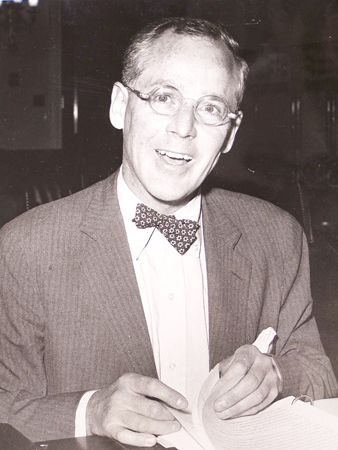

While the Divisions in Washington retained some enforcement capacity, they did little in this era; one scholar estimated that the Division of Trading and Markets, for instance, pursued fewer than 50 cases over the entire decade, and Stanley Sporkin, also later Director of Enforcement, called it a “paper-pushing outfit” mainly concerned with criminal referrals.(1) Given that the regional offices were themselves strapped for resources, enforcement focused on low-hanging fruit, “local broker-dealer practices and the illegal sale of new securities.”(2) More gentle treatment was given those in the upper reaches of the securities markets; as one senior SEC official recalled decades later, “exchanges were off limits . . . you just didn’t touch the heartland of Wall Street.”(3) This hands-off approach would, in the late 1950s, give several specialists on the American Stock Exchange free rein to violate the securities laws by distributing unregistered securities. Only with the 1959 investigation of Re and Re, AMEX specialists discovered to be engaged in distribution of unregistered stock, stock manipulation, and bribery, would the main office’s enforcement function show signs of life.(4)
There was one colorful spot in this gloomy period: Eddie Jaegerman.(5) A student of William O. Douglas at Yale Law School, Jaegerman spent decades investigating wrongdoing for the Commission. Based out of Washington, he and his partner Tim Callahan constituted the “Special Investigations Unit,” which in practice made them “free roaming investigators” with little oversight and a charge that took them over the country and occasionally out of it.(6) Stories about Jaegerman were legion. One staffer recalled that Jaegerman and Callahan on occasion “literally knock[ed] the door down” to stop a boiler room operation. It was Jaegerman who, in the late 1950s, pushed to investigate Re and Re.(7)

Enforcement activity at SEC headquarters revived in the 1960s thanks to the Commission’s chairs during most of the decade, William Cary and Manuel (Manny) Cohen. Cary, a former SEC staffer and law professor, was appointed by President John F. Kennedy in 1961 and arrived determined to energize the Commission after the torpid Eisenhower years. Insider trading was an early target. Before the 1960s, trading stock using confidential corporate information was seen as a matter for state law.(8) Cary would change that. In 1961, he authored In re Cady Roberts, an administrative decision applying Rule 10b-5’s antifraud provisions to insider trading. In Cady Roberts, Robert Gintel, a partner in the brokerage firm of Cady, Roberts, was found to have violated Rule 10b-5 after receiving a tip about Curtiss-Wright Aircraft stock from an insider and trading on the information. The decision made clear that the SEC viewed insider trading prohibitions as covering not only corporate insiders, but tippees who received information from those insiders, and applied even to market transactions where buyer and seller never met. This approach would be adopted by the Second Circuit seven years later in its landmark Texas Gulf Sulphur decision (incidentally, the last major case on which Eddie Jaegerman worked).(9) Ever since, insider trading has been a major issue for the Commission.
(1) Joel Seligman, The Transformation of Wall Street: The Securities and Exchange Commission and Modern Corporate Finance (3d ed): 360 (“Seligman”).
(2) Seligman: 360
(3) Seligman: 361 (quoting Ralph Saul).
(4) Hawke 15-16.
(5) Edward Jaegerman Dies, former Chief of Special Investigations for the SEC, Washington Post February 25, 1980: C4.
(6) Hillel Black, The Watchdogs of Wall Street: 35-36; Ralph Saul interview: 2.
(7) Seligman: 361.
(8) Stephen Bainbridge, Corporate Law (3d ed.): 305-309.
(9) In the Matter of Cady, Roberts & Co., 40 SEC 907 (1961); SEC v Texas Gulf Sulphur Co., 401 F.2d 833 (2d Cir. 1968); Adam C. Pritchard and Robert B. Thompson, Texas Gulf Sulphur and the Genesis of Corporate Liability Under Rule 10b-5, 71 SMU L. Rev. 927 (2018)